
If you're already deeply enmeshed in the hobby of street machining, you’ll know that you could spend a king’s ransom kitting out your dream toolbox. But what tools do beginners in the sport really need to get them started? As someone who’s twice had to build his toolbox from scratch, here are my suggestions for the essential kit you’ll need when diving into Project Car Life.
But before we hook in, if you don’t have a packet of cable-ties in your toolbox, you’re going to end up swearing at the Car Gods. These things aren’t just the cornerstone of drift car fabrication, they’re also gold for dummying-up parts, tying brake calipers out of the way, or restraining unruly apprentices (please don’t do this).
Other smaller tools you’ll wind up needing in a pinch include circlip pliers, a sharp knife, various-length extension bars, a window removal tool, Torx bits (mandatory if working on European cars), interior-trim pliers and Allen key sets. These can be added over time to avoid a huge initial expense.
HAND TOOLS
When you’re starting out, you can get the best bang for your buck by purchasing a comprehensive, good-quality half-inch metric and imperial socket set. A brand-name kit will have better, finer action from the ratchet, and the sockets won’t round off on the first use like the super-budget junk.
Eventually, you’d ideally have metric and imperial sockets in both 3 /8in and 1/2in formats. The 1/2in sockets are great for cracking tough, large-diameter bolts, while the smaller-format tools are easier to get into tight spots and prevent fatigue while hanging upside down removing doohickeys from your busted whatsit.

Your socket set should be paired to a one-metre-long 1/2in breaker bar. ‘Big Bertha’ will save your bacon when it comes to undoing rusted, old or just plain stubborn bolts.
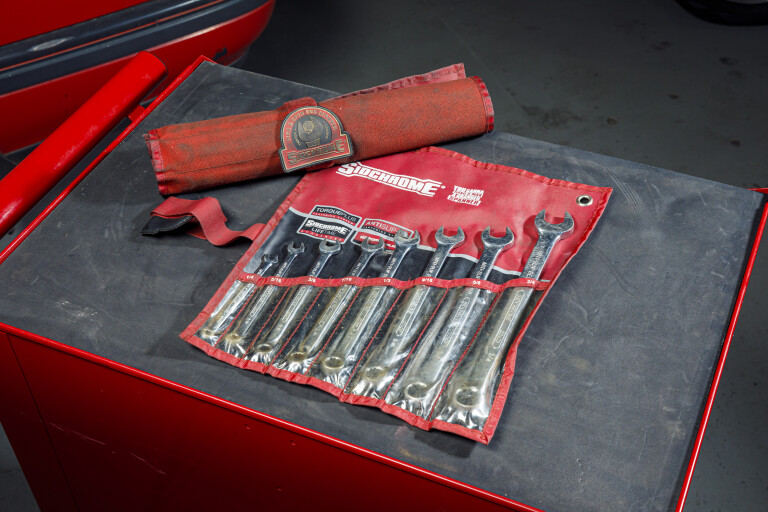
Buying your spanners and screwdrivers in kits is the way to go, and you’ll need a range of sizes both in length and head size. Try to find screwdrivers with a soft handle rather than the old-school plastic jobbies, as these will be nicer to use and offer better grip.
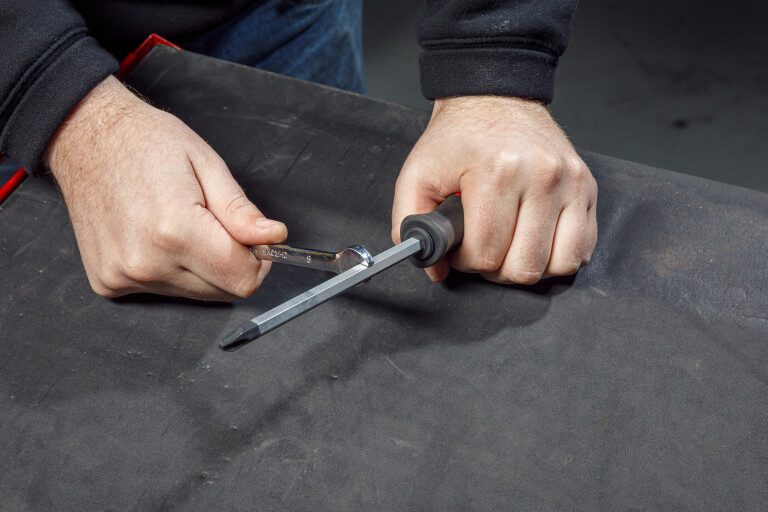
When you’re starting out building your toolkit, I’d suggest first buying the combination ring and box-end spanners, then adding ratchet-head spanners (great in tight spots that make non-ratcheting tools a chore). After that, add the more specialty bent-end and stubby spanners (for tight, cramped spaces) as you need them.
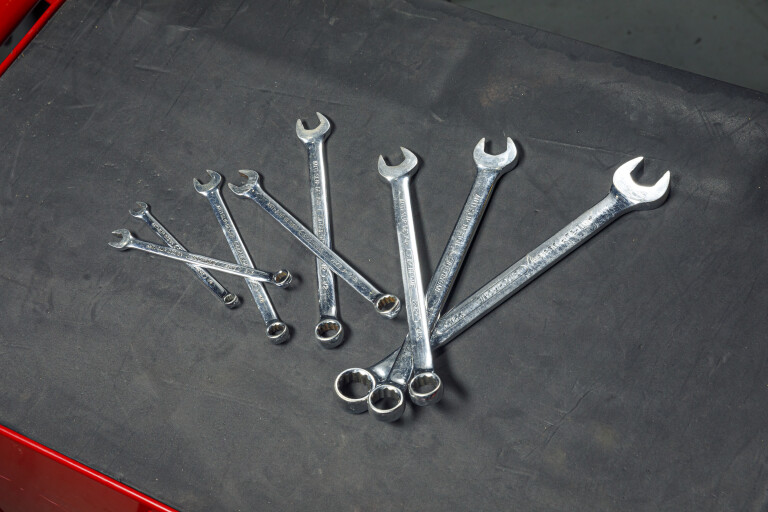
Skipping a few nights on the Denzel Frothingtons to save up for a quality spanner roll is a capital idea. Good tools prevent skinned knuckles, are nicer to hold, and will outlast Keith Richards.
POWER TOOLS
Battery-powered tools are the bomb – light to hold and super-convenient to use. When you’re starting out, you really only need three pieces of powered gear: a good-quality 125mm battery-powered grinder, a drill driver, and a half-inch impact wrench.
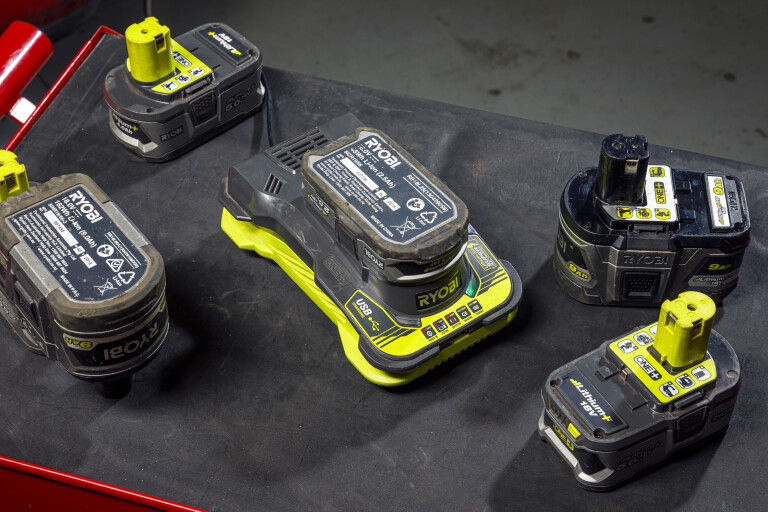
When setting up your powered tools, have at least one high-amp-hour (6Ah or higher) battery per tool, along with a spare and a twin-port charger. Your grinder will chew up a 4Ah or 5Ah battery when you’re stripping paint or dressing MIG welds, so a 6-9Ah battery will have you taking fewer recharging breaks. Similarly, drilling thick stainless steel or undoing lots of rusty undercarriage bolts will require plenty of juice, so don’t scrimp on the battery specs.
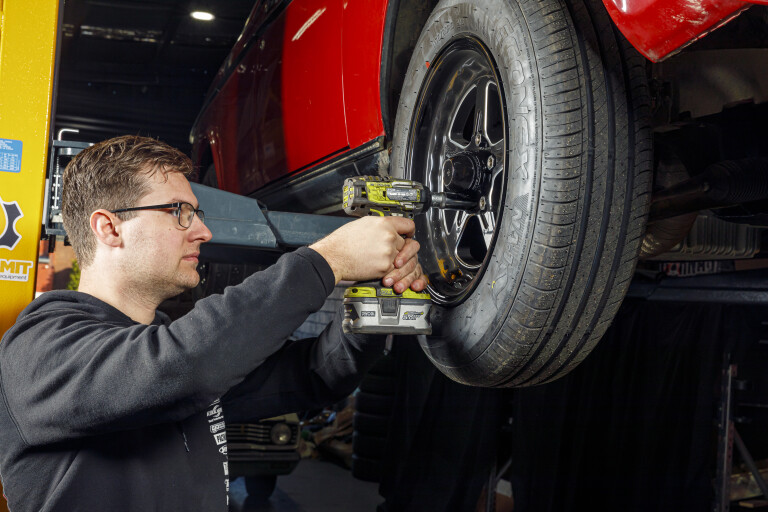
A half-inch impact gun will make your garage life immeasurably easier, as large bolts are quickly zotted into place (or un-zotted when dismantling) before you torque them to spec. With a 9Ah battery, you could easily have all the drivetrain, suspension and most of the chassis stripped inside a day.

Next Christmas, ask Santa for a high-output light or two. Most power tool manufacturers sell battery-powered workshop lights like the one pictured. One of these with a really big battery (up around 9Ah) will cop a workout when it comes time to twirl spanners at night.
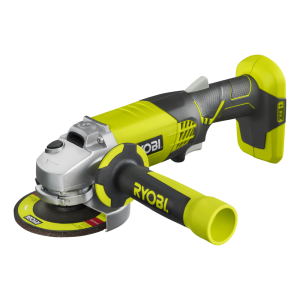
Points of interest:
- Max 9,200rpm no load speed
- Anti-kickback protection
- 125mm interchangeable discs
- Fully adjustable safety guard
- 4-year warranty

Any project car is going to require some fabrication, so to make your life easier, grab a bench grinder, a drill press and a decent vice. These can all be found second-hand, or you can buy cheap stuff from a large hardware chain. One thing you shouldn’t scrimp on, though, is your personal protective equipment (PPE). Buying a couple of small clamps to hold your job without risking your hands is also more than a suggestion.
SPECIALTY TOOLS
One of the most important things you’ll discover when cracking into a project car is just how many specialty tools you’ll need. These can be added over time, so try to notice when the big sales are on. More often than not, though, these will be the things you will be racing to buy five minutes before the store closes on a Saturday afternoon.
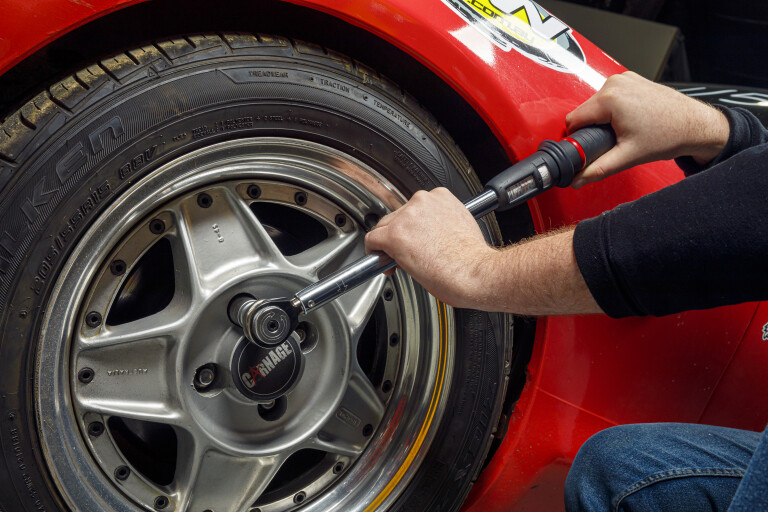
It’s worth spending the extra dosh for a good-quality torque wrench, and make sure you take good care of it. The internet may think you’re a legend for rattle-gunning your engine back together, but it’s a cold and lonely wait for a tow truck that could be avoided just by torqueing parts correctly. Wheel nuts, head bolts, suspension bolts and more all need proper torque settings.
Locking pliers allow you to get an iron grip on stubborn bolts or clamp two parts together, while adjustable-jaw pliers are handy for removing hoses. Alligator-jaw pliers are great for crimping, while side-cutters are mandatory for wiring jobs and trimming cable ties.

Getting yourself a test light, a multi-meter and a soldering iron will let you knock over simple wiring jobs. A ratcheting wire-stripper is an extra spend but makes that job so much easier than pliers. Throw a roll of black electrical tape and some heat-shrink into the toolbox and you’ve got pretty much all the electrical-related kit you’ll need – at least until you have to rewire a whole car.

A selection of pry bars will always get a workout. Certainly, a proper pry bar is a much better option than your flat-head screwdrivers for levering engines into position or separating stuck parts. A cheap set of picks are great for unpinning wiring plugs or cleaning out clogged hoses.
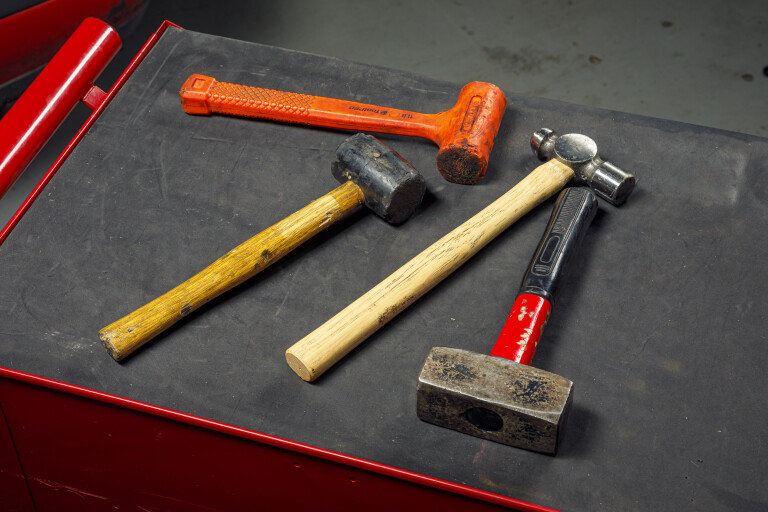
Get a claw hammer, a mallet for soft-whacking, and a heavy dead-blow for proper percussive maintenance. Hammers are also handy for threatening the car if it doesn’t start playing ball and operating how it should!
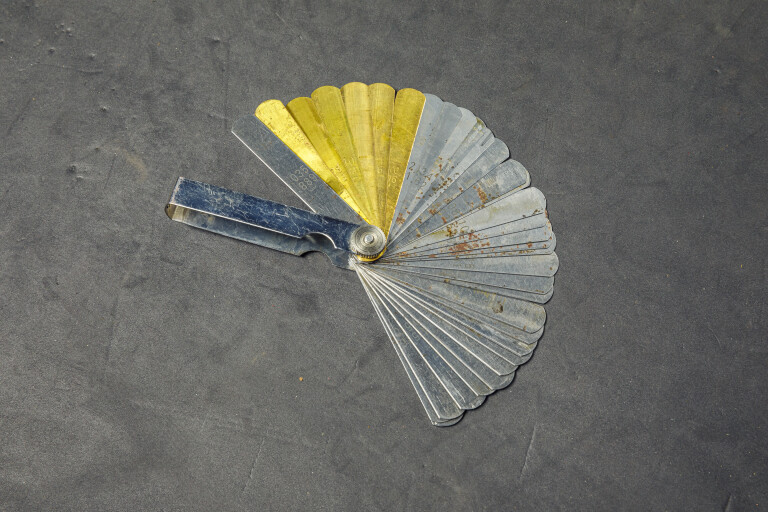
Two basic tools that are both very handy and very cheap are a set of feeler gauges and a magnetic pick-up tool. Like a big breaker bar, these aren’t needed all the time but are great additions to any kit so you can gap sparkplugs, set valve lash, or find that crucial bolt you just dropped into the bottomless depths of the engine bay.
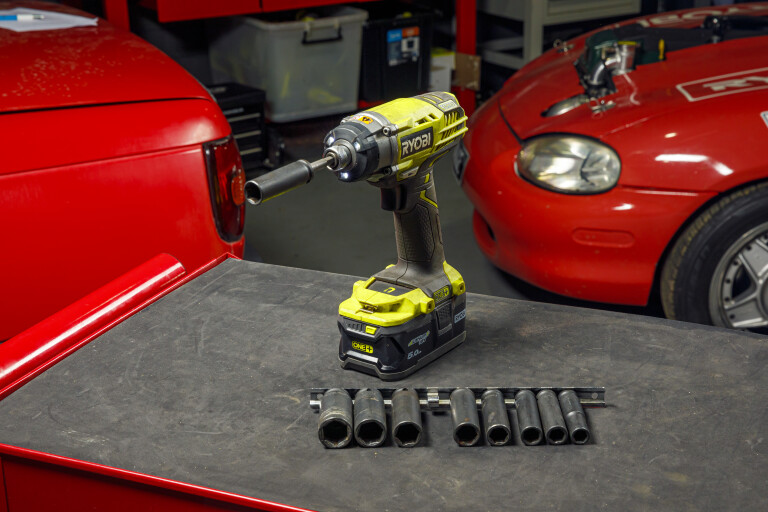
If you’re using a battery impact gun or decent air rattle gun, even an inexpensive impact socket set will prevent you from chewing the drive out of the back of your chrome hand sockets. When starting out, concentrate on larger bolt sizes (above 14mm or 9/16in), as the torque needed to bust them loose will do damage to your chrome sockets.
THE BOX
Keeping your tools organised stops them from going missing and having to waste money replacing them. For around $100, you can buy a decent bench-top locking toolbox, giving you a secure space to stuff your hand tools. And of course, decorating the box with cool car stickers is a rite of passage and a crucially important part of Project Car Life. Don’t bother buying a flash-Harry roll-cab toolbox right off the bat; put that money into more tools.
Instead, start with the bench-top box, and, if you think you’re going to wind up needing a lot of tools (and you have the room), you can add the roller cabinet later on to build out a full roll-cab box. Once the toolbox is loaded, you’ll need to be very careful moving it, as it will be as heavy as an engine block. And remember to lock the drawers before you move it, otherwise they’ll all slide open, unbalance the box and tip everywhere.
BUDGET CHOICES
Kitting out a sweet toolbox doesn’t have to be seriously expensive. You can still build a really capable collection of tools without shredding your smoko pie budget.
Garage sales are a beaut way to score odd spanners, screwdrivers, hammers and toolboxes. Some of these old hand tools were crafted in a different era when things were built to last, so they’ll absolutely be ready to put to work.
Online avenues like Facebook Marketplace, eBay and Gumtree always have second-hand tool sets and kits for sale as people upgrade their equipment or downsize after leaving a trade. This presents a great opportunity for enthusiasts to pick up professional-grade tools at a bargain price.
However, just like buying a car off the internet, take some precautions by inspecting the goods in a well-lit area, and if it seems too cheap, you should think carefully as to why; don’t buy someone else’s stolen tools.
Keep an eye on the big tool stores around Boxing Day or end of financial year, when they launch their big sales promotions. Pool your money with mates to bulk-buy tools and get bigger discounts or extra rewards points to spend on more tools! Whatever you do, just don’t buy those horrible, low-rent tools in the plain black plastic case.


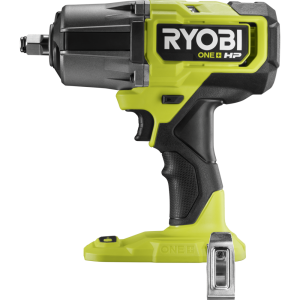

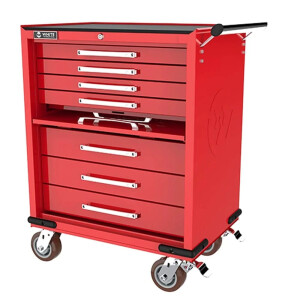
COMMENTS